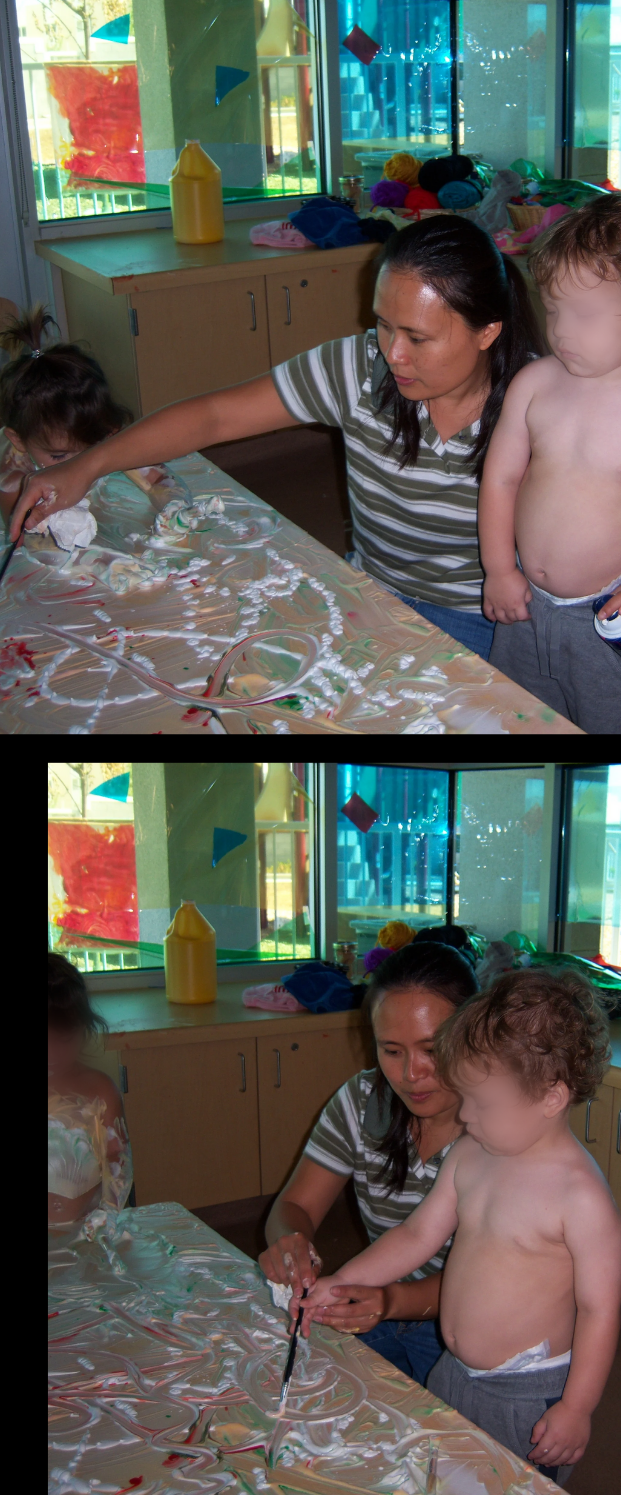32.2.2: Temperament and Curriculum
- Page ID
- 142690
Individual Differences
Understanding the unique differences of each infant and toddler helps caregivers build relationships with infants and toddlers and interact in ways that meet each child's needs. One of these individual differences is temperament. Temperament refers to behavioral "styles" that children are born with and describes how they approach and react to the world.[1] Temperament is crucial because it affects how infants and toddlers interpret and respond to the world around them. When planning and implementing curriculum for individual or groups of children, caregivers must consider the temperament of the infants and toddlers. When planning something messy or loud where a slow-to-warm child is present, how will the caregiver provide caring and respectful support structures that allow him to engage in the curriculum without feeling overwhelmed?

In Figure \(\PageIndex{1}\) above, the relationship between the child and primary caregiver provides comfort so the infant with a more reluctant temperament can still engage with the experience.
[1] Culture and Psychology by L D Worthy; T Lavigne; and F Romero is licensed CC BY-NC-SA
[2] Image by Amanda Taintor is licesned CC BY-NC

